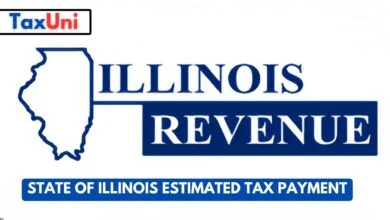QBI Calculator
How much can you deduct for QBI (Qualified Business Income) on your tax returns? This article will provide information on how to use a QBI calculator to help you determine if you are eligible for this deduction.

Qualified business income (QBI) is the net income of your business and can be calculated by a QBI Calculator. It excludes interest income, capital gains, and wages earned as an employee. However, you can deduct up to 20% of the qualified business income. The IRS has made it easy to calculate the qualified business income deduction by creating a new form. Form 8995 is a worksheet that can help you calculate your QBI. You can get help from the QBI calculator to easily calculate your deductions.
A 20% QBI deduction is a tax deduction for the owners of a pass-through business. A few requirements must be met before a deduction can be claimed. In order to qualify for a deduction, you must have taxable income below a certain threshold. The threshold ranges from $160,700 to $210,700 for single filers and from $321,400 to $421,400 for married filing jointly. The QBI deduction is available to most people. However, there are some complex rules and requirements that must be followed. For example, you must be a qualified business and have qualified business income.
The deduction is also capped at 20% of taxable income, not adjusted gross income. So, if you have $150,000 in taxable income, the QBI deduction will not be worth more than $60,000, which is a small amount of money. There are two forms that are used to calculate the QBI deduction. They are Form 8995 and Form 8995-A. To determine whether you are eligible for the deduction, you will have to fill out the relevant worksheets.

If you have a complex situation, you may not be able to claim the full QBI deduction. You should consult a tax professional to discuss the deduction’s potential impact on your taxes. One of the major changes to the TCJA is the reduction in the corporate tax rate. This means that there is more tax room for workers with pass-through income. Taxpayers who earn a large amount of QBI may lower their taxable income by taking advantage of the 20% QBI deduction. It does not affect your AGI. However, it may affect the amount of self-employment tax that you owe.
How to Use the QBI Calculator?
The QBI calculator is an essential tool for any small business owner. Whether you’re just starting out or have been in the business for years, it’s easy to get bogged down in tax minutiae. The QBI calculator is designed to simplify the process, allowing you to make the most of your hard-earned cash. It will also allow you to see exactly how much you qualify for and what you can write off for other business expenses. With the help of a reputable QBI calculator, you can focus on running your business rather than worrying about the IRS. And since it’s so simple to use, you’ll be able to spend more time growing your business.
The QBI calculator is not the only tool you should be using. You should consult an accountant or tax attorney if you’re unsure what to do next. Another option is to take advantage of the tax software that comes with your tax return. This will ensure you don’t miss out on any deductions. Having a qualified accountant on hand is also a good idea, as they’ll be able to spot any mistakes, especially ones you may have overlooked.
QBI Deduction Income Limitations for 2024
| Filing Status | Income Limitation |
|---|---|
| Single | $164,900 |
| Married Filing Jointly | $329,800 |
| Head of Household | $164,900 |
| Married Filing Separately | $164,900 |
Eligibility and Calculation of the QBI Deduction
To determine if you qualify for the QBI deduction and how much you can deduct, several factors come into play:
- Business Structure: The deduction is available to businesses structured as sole proprietorships, partnerships, S corporations, and certain trusts and estates. C corporations are generally not eligible.
- Qualified Business Income (QBI): QBI is the net income generated by your eligible business activities. It excludes income from capital gains, dividends, and certain other sources.
- Thresholds and Phase-Outs: Depending on your filing status and taxable income, there are income thresholds and phase-out ranges that can affect your eligibility for the full deduction.
- Specified Service Trade or Business (SSTB): Some professional services, such as healthcare, law, and consulting, are subject to additional restrictions on the QBI deduction if your income exceeds certain limits.
Calculating the QBI Deduction
The calculation of the QBI deduction can be somewhat complex, but it generally involves the following steps:
- Determine Your QBI: Start by calculating your qualified business income from each eligible business you’re involved in.
- Apply the Deduction Percentage: Depending on your total taxable income and filing status, you’ll apply the appropriate deduction percentage to your QBI.
- Consider SSTB Limitations: If your business falls into a specified service trade or business category and your income is above the threshold, the deduction may be limited or eliminated.
- Factor in Wage and Capital Limitations: For high-income earners, there are additional limitations based on the W-2 wages paid by your business and the unadjusted basis of qualified property.





